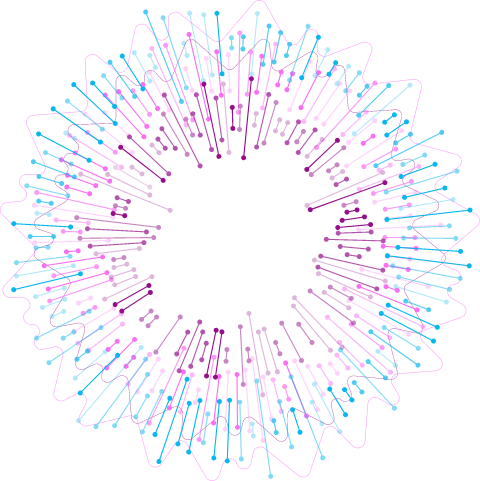
What is telecommunication data analytics?
The analysis of telecommunication data has revolutionized an entire sector that is resolutely digital. From the fixed or mobile customer’s device to the digital exchanges and relay antennas, the operators’ equipment produces a lot of telecom data.
This data can be efficiently connected by Loamics-DataCollect solutions, organized, and stored by Loamics-DataLake and analyzed by Loamics-AlgoEngine. Data-driven telecom companies can then optimize their processes and increase their revenues through machine learning models. They harmonize and streamline the entire telecom operational chain.
The analysis of telecommunication data is a definite advantage for the entire telecom analytics industry, which is constantly generating data itself. Data science machines are therefore an essential lever for telecoms and for telecom service providers wishing to better sell telecom products.
Data collection is greatly facilitated by the integration of their data production with a software suite such as Loamics. With Loamics-DataLake it is possible to store and manage this permanent flow to develop processes with Loamics-AlgoEngine. The use of the Loamics-Suite on telecommunication data can be compared to the water of a river that is stored in a dam lake to feed the insight-generating turbines of the machine learning processes. They exploit them and create added value to the entire telecom organization.
How do telecommunication companies use data analytics?
Telecommunications companies use the insights provided by data analysis in 4 key ways.
First and foremost, they seek to maximize profits by enhancing their marketing strategy and planning. Big Data telecom analytics also allows them to make their entire business operations more efficient. With real-time analysis of telecom activities, companies can produce detailed reports and update dashboards in real time.
How telecommunication companies use data analytics?
There is a good dozen use cases for big data technology identified by telecom operators. They are based on 3 axes : the product, the networks and the customers. Of course, all the resources of data analysis software such as Loamics-Suite can be used daily for internal administration and operational tasks.
These 10 use cases are: _

Real-time data analysis
More than any other telecom science industry, the telecommunications industry produces a plethora of data that is growing exponentially. Only Big Data analytics can filter, cleanse, and store the vast amount of information produced in an accessible way. It is therefore an invaluable resource for all sectors of the company, from the most technical to the most administrative.

Significantly enhanced network security
The security of telecommunication networks is the main concern of operators. Cyber-attacks are multiplying, and their number and complexity force them to resort to new technologies to counter them. Even the best specialists are not up to the task of dealing with such large-scale attacks. Instead, telecom service providers are now relying on specially trained data-fed machine learning algorithms.

Better fraud detection
The sheer number of simultaneous transactions on a telecom network makes it relatively easy for bad actors to commit fraud. Fraud detection by simple exploratory processes is no longer possible for telecom analytics. It is impossible to develop rules for all types of cyber-attacks, which are more and more versatile. Instead, artificial intelligence models must be deployed to detect access and payment anomalies. This is the future of fraud detection for telecom operators.

Predictive analytics for network behavior
Telecom networks are becoming increasingly complex, and they must remain invariant at all costs. This means that the failure of one or more nodes essential to the proper flow of information must not block the entire network. To achieve this, intelligent data traffic regulation and routing systems must be put in place, which are automatically activated in the event of the failure of certain gateways. Real time analytics for network behavior is a key tool for optimizing revenue streams and empower business intelligence with data telecom analytics.

Optimization of telecom products
One of the main advantages of telecom products is the possibility to optimize them according to customer demand. This high capacity of personalization facilitates rapidly identifying and responding to concrete needs. With data analysis, it is possible to define typical consumer personas to offer them telecom products that are adapted to them.

Greater price optimization of products and services
Optimizing the prices of telecom products and services is a major factor in increasing operator revenues. Telecom data science can be used to determine certain times of the year when certain products and services should be priced or discounted, for example during the holiday season, Black Friday, and other events where it is not uncommon to offer subscriptions as gifts.

The calculation of the customer lifetime value (CLV)
The calculation of the real value of a customer over time with an operator helps to define a highly personalized sales strategy. It allows the categorization of prospects thanks to the science of the data to ensure and maintain loyalty.

Customer churn prevention
Customer churn is a data like any other that can be calculated quite easily with adapted machine learning software. The data analysis considers the evolution of the offers and the prices of the competition to always propose an engaging alternative that will keep the operator's customers loyal.

More targeted marketing
Telecommunications operators' marketing is done online and usually on mobile devices that are connected to their own networks. By using tools like the Loamics-Suite it becomes possible to define a highly individualized customer persona. Its exploitation by adapted machine learning models allows an optimized personalization of automated online marketing operations.

Better geo-localized promotions
Since smartphones now all have GPS, and it is also possible to geolocate a mobile device by triangulation, location information becomes an important big data analytics for marketing. By locating the customer, it is possible to better understand their consumption habits and to propose more relevant offers. It is even possible, thanks to telecom data analytics, to present them with products and services that they are not yet aware of and would not even know they need, thanks to data scraped from social media.



















